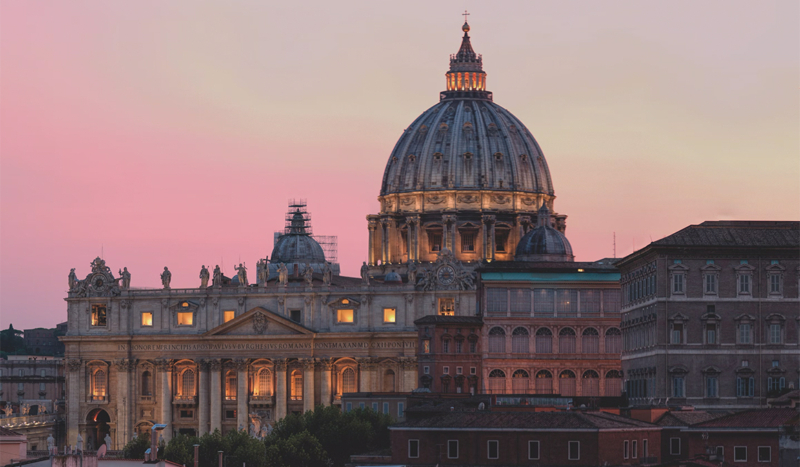
Matthias Mullie / unsplash
CV NEWS FEED // Few events in global religious life carry the mystique and gravity of a papal conclave, yet the process remains shrouded in misconceptions and dramatic myth. George Weigel, a distinguished senior fellow at the Ethics and Public Policy Center in Washington, D.C., and acclaimed biographer of Pope John Paul II, offers a rare, clear-eyed analysis of the intricate and often misunderstood variables that shape the election of a new pope.
In a long format article published on Saturday, April 26, in The Wall Street Journal, Weigel emphasizes that the conclave is not simply a matter of ritual and secrecy but a moment when fundamental questions about the future of Catholicism are at stake. Since the Second Vatican Council in the 1960s, the Church has been divided by two competing visions: one that sees the Council as a mandate to adapt or even abandon long-held truths, and another — what Weigel terms “Dynamic Orthodoxy” — that seeks to present ancient teachings in new ways without compromising their substance. This underlying tension will be a decisive factor as cardinals gather to choose the next Bishop of Rome, a decision that will shape the direction of the Church for years to come.
The mechanics of the conclave itself are far more complex than popular portrayals suggest. Only cardinals under the age of 80 are eligible to vote, and before the conclave begins, all cardinals participate in formal “General Congregations” to discuss the state of the Church and the qualities needed in a new pope. Informal gatherings, known as prattiche (exercises), occur in parallel, where candid conversations and alliances form over meals and private meetings. These prattiche can be decisive in distinguishing serious contenders from media favorites, and leaks from these sessions often fuel speculation in the days leading up to the conclave.
When the conclave officially opens, the cardinal-electors are sequestered, stripped of communication with the outside world, and subjected to rigorous security measures, including electronic jamming to prevent eavesdropping. The voting process is methodical and can be tedious, with up to four ballots each day until a two-thirds majority is achieved. The ballots are burned after each session, with the famous white smoke signaling the election of a new pope.
“During the conclave,” explains Weigel, “the cardinal-electors, bereft of cellphones, computers and outside contact, are sequestered in St. Martha’s House, the Vatican guest house built in 1996. Its rather spare accommodations bear little resemblance to the marble-walled suites depicted in the movie “Conclave,’ though the dining room is somewhat nicer than the film suggests. The cuisine is adequate and wine is readily available, but there is no bar, so prudent cardinals seeking sustenance from the finest products of Kentucky or the Scottish Highlands bring their own supplies.”
“The cardinals,” Weigel also explains, “are taken by bus to the Sistine Chapel for voting each day, but some prefer to walk, which allows for more private conversations than are possible during the meals they take together.”
Contrary to the myth that a sitting pope can guarantee the election of his chosen successor by appointing a majority of the electors, Weigel points to historical precedents that defy this assumption. Past conclaves have repeatedly demonstrated that even when a pope’s appointees dominate the electorate, the outcome can be unpredictable, shaped by shifting alliances, psychological dynamics, and even shocking events such as unexpected deaths or resignations.
This unpredictability is heightened by the extraordinary diversity of the modern College of Cardinals. The current electorate is the largest and most globally representative in history, with significant numbers from Africa, Asia, and Latin America, and a diminished Italian presence. For the first time, cardinals from countries such as Singapore, Mongolia, and Rwanda will participate, while some traditional Catholic centers will have no representation at all. This diversity complicates the formation of voting blocs and makes it harder for cardinals — many of whom barely know each other due to infrequent gatherings under Pope Francis — to coalesce around a single candidate.
Weigel also highlights the impact of broader ecclesial and cultural divides, particularly the contrast between the declining, progressive German Church and the rapidly growing, orthodox communities in sub-Saharan Africa. The German Church, a proponent of what Weigel calls “New Model Catholicism,” has seen sharp declines in religious practice despite its wealth and social influence, while African Catholicism, rooted in Dynamic Orthodoxy, is flourishing. The tensions between these models will inevitably influence the deliberations, as cardinals debate whether the Church should accommodate modernity or seek to transform it with enduring truths.
Ultimately, Weigel’s analysis reveals that the election of a pope is shaped by a web of theological, cultural, and personal variables that defy easy prediction. The conclave is less a political convention than a unique psychological and spiritual micro-environment, where tradition, conviction, and the unpredictable interplay of personalities converge to determine the future of the world’s largest Christian community.

